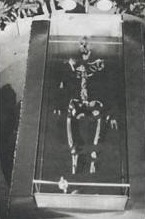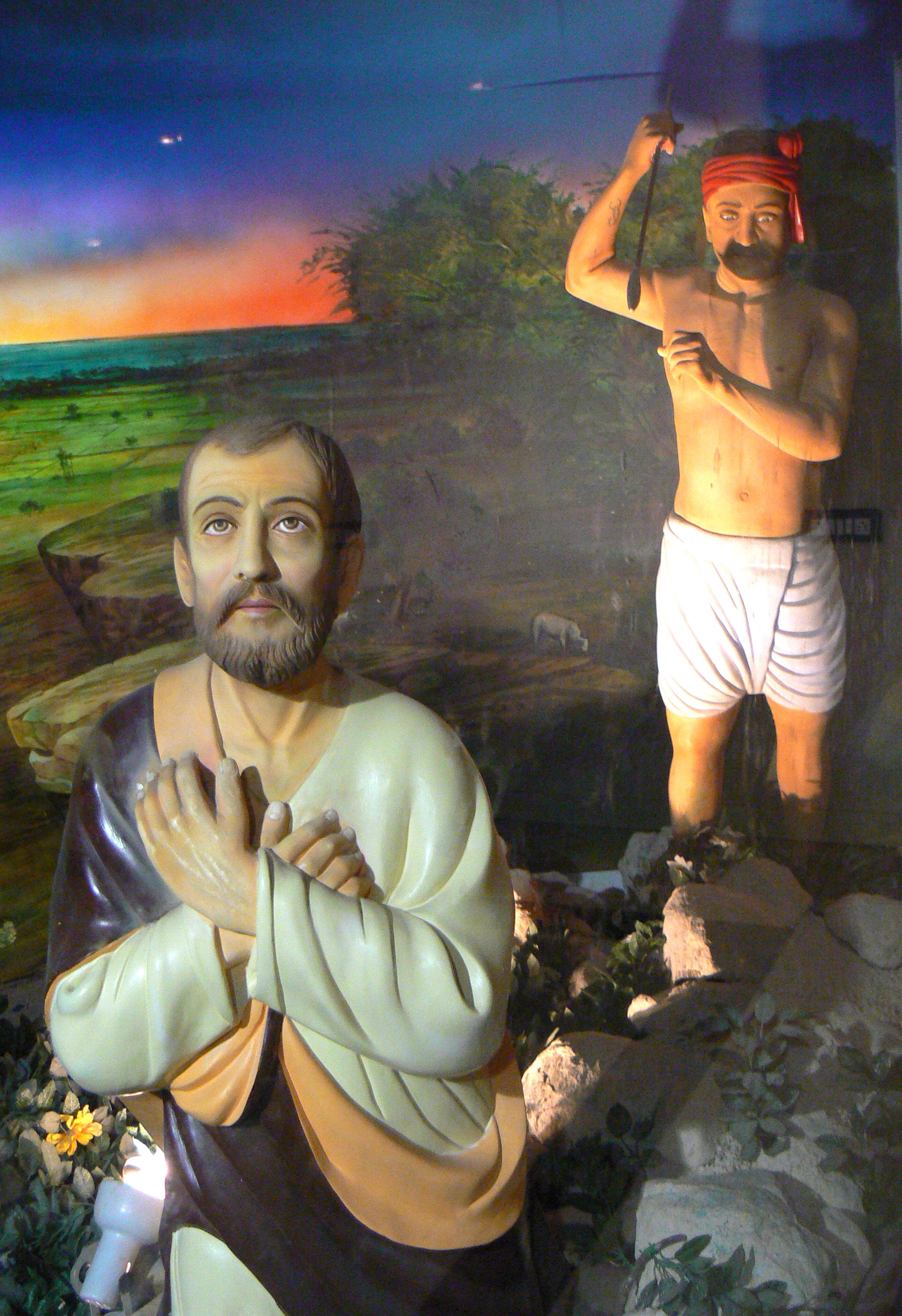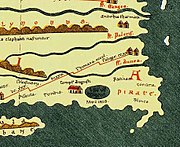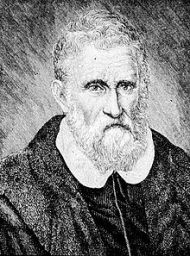“The Catholic Church owns the largest portion of Bharat’s non-agricultural land. … The Catholic Church acts like a state within a state in the Union of Bharat yet gives its feudal allegiance to the Pope in Rome!” – HinduPost Staff
A tweet series on popular St. Thomas Mount in Chennai caught social media’s attention recently. This mount is a beautiful hill located close to Chennai international airport. Many Christians in Bharat believe the myth that Thomas the Apostle stayed and was “martyred” on this hill, although researchers and scholars have found no evidence to back this claim. The St. Thomas Garrison Church is located at the bottom of this hill. A shrine dedicated to Mary was built in 1523 on top of the mount, by invading Portuguese colonials. A flight of 160 steps leads up to the summit of the mount.
The tweet series mentioned that of late the shrine management has started restricting people who wish to come to the hill for activities other than praying; boards have been put up banning activities like walking, jogging, exercising etc on the hill.
As mentioned in the tweet series, this board restricting entry has been put at the foot of the hill which clearly says morning and evening exercises are “banned” on the hill:

Mr. G. Christuraj, who is the parish priest and rector at St. Thomas Mount National Shrine about this issue. We asked him if such boards have indeed been put aimed at banning the usual activities of residents / visitors other than praying, and if the entire hill is owned by the shrine management.
He confirmed that boards have been put up at both gates at the bottom of the hill to prevent morning / evening walking and exercises. The reason he gave is that people were misusing the “privilege” granted by the Church management and disturbing the prayer activities. He said that people can still access the hill for walking, jogging, exercises on the following conditions:
1. They should be “appropriately dressed”.
2. They should avoid coming during Church prayer times (morning, noon and evening).
3. They cannot come right to the top where the shrine is located unless they wish to pray.
Mr. Christuraj claimed that the entire hill is owned by the Archdiocese of Madras—Mylapore, which comes under the Roman Catholic Church of India. It was originally “owned” by Portuguese missionaries who transferred control to the Church. He also added that locals themselves have expressed concern that some were using the hill as a “lovers park”, and hence the management had decided to take this step. He also confirmed that the Army’s OTA (Officers Training Academy) too uses the hill at times (around once a month) but that is done with permission of the Church management.
But the signage boards clearly mention “banned” and hence, going by the above conversation with Mr. Christuraj, the text on the signage boards needs to be corrected—as walking is not “banned” but “restricted”. Mr. Christuraj’s claim the entire hill is owned by the Catholic Church also needs to be probed.
Catholic Church: Largest non-agricultural land owner in Bharat
It is surprising that large pieces of land are still under the exclusive control of various churches in Bharat, which were allotted to them as grants by British and other invaders. Unfortunately, these parts of land were not nationalized after independence. In various states, land reforms were effected which aimed at distributing the land evenly but it seems that land owned by churches was not touched. There are very few details available on the internet and there is hardly any transparency in information regarding minute details of land owned by various Christian organizations and churches. As per an article written in 2022, Catholic Church owns the largest portion of Bharat’s non-agricultural land. Note, this does not include the land holdings of the Protestant Churches and other Christian sects.
According to the census of 2011, official records state Christian population as approximately 27.8 million, constituting 2.3 percent of total Bharat’s population. So organizations that control just 2.3% of population own the largest portion of land after government in this country. How much more skewed can the allocation of this most valuable resource be?
In the past, Catholic groups have expressed concerns and asked for a white paper on land dealings by the Church bishops and related powerful people, as this news report suggests. The Catholic Church in Bharat acts like a state within a state in the Union of Bharat yet gives its feudal allegiance to the Pope in Rome. Contrast this to the way many large Hindu temples are controlled by the Government, donations offered by devotees siphoned off, and temple lands sold / leased for a pittance or encroached by political-criminal mafias.
While the Church and its organisations exercise absolute control over land allotted to it by old colonial masters, pastors attempting conversions to Christianity have dared to enter holy Hindu lands like sacred Tirumala hills.
The Church in Bharat should seriously consider giving up a large chunk of its humongous land holdings, much of it in prime urban areas, which was bequeathed to it by European colonials who captured the same from natives. This land should be redistributed to benefit local communities. Or the Government has to take steps to nationalise this land bank currently under Church control, and use the same in a transparent manner for the nation’s development. – HinduPost, 16 September 2016




























Parish Priest and Rector Christuraj is being untruthful when he says the entire hill belongs to the Catholic Church.
The Portuguese took the hill by force in the 1540s and the Catholic Church is claiming ownership today by deceit.
The hill belongs to the State or the St. Thomas Mount Panchayat Union. It is public property. The old Portuguese church can be claimed by the ASI for preservation and administration as it is more than a hundred years old.
This matter should be probed and taken to court if the Church refuses to remove its prohibitory sign boards, gates and fences.
Here is what we wrote in 2010 about the known history of the hill:
“Dr. R. Arulappa, [the former Archbishop of Madras-Mylapore,] in [his book] Punitha Thomayar, asserts that Big Mount was originally called Bhrigu Malai (Brungi in Tamil) and was the seat of the Hindu sage Bhrigu Rishi (Brungi Munivar) until St. Thomas came and chased him away. This story, … is another piece of fiction that has at its core a little truth. The hill was sacred to Shiva whom Bhrigu Rishi worshiped, and it is the Portuguese who chased the rishi away, not St. Thomas. The temple was destroyed around 1545, when they gained effective control of the hill, which was the highest point in the area and the southern limit of their territory. Portuguese historians describe it as being crowded with ruins then, and broken temple stones could still be found on its slopes, on the south and west side in 1995. The Archdiocese of Madras-Mylapore has since cleaned up the evidence—with the connivance of the Archaeological Survey of India?—and completely rebuilt the hill-top.
“The Portuguese had begun to settle around Big Mount as early as 1523 — the same year they “discovered” the tomb of “St. Thomas”—and one of the first to take up residence there was Diogo Fernandez. He would succeed in erecting a small chapel on the hill before 1545, but the construction of the church, called Our Lady of Expectation, did not commence until 1547. It was built on the east-west alignment of the temple foundation—the ancient granite base of the flag pole is on the eastern side of the church and this writer had observed it in 1991—but the Portuguese reversed this order in keeping with established Christian practice when building on a Pagan site, and the church entrance is on the western side. In 1707, the building was extended by an Armenian merchant who also constructed the stairs going up the hill to the church, and the royal arms of Portugal were added to the facade of the main porch.
“It was when clearing the rubble for the church, in 1547, that the Portuguese “discovered” the famous Persian “St. Thomas” cross in the temple foundation. Diogo Fernandez is not implicated in this fraud, but the Vicar of San Thome, Fr. Gaspar Coelho, and the Captain of the Coromandel, Gabriel de Athaide, are, as the construction was under their direct supervision. St. Thomas could not have carved this cross; it has been dated to the eighth century, and like its counterparts in Kerala was carved by a Syrian Christian named Afras who inscribed its border in Pahlavi (Persian) script. It was kept inside the church behind the altar, and used to “bleed” at irregular intervals up to 1704. This phenomenon stopped as soon as the sensible and schismatic British began to move into the area and build a cantonment.
“The other “St. Thomas” relic in the church is a brightly coloured icon of Mary and the child Jesus. It is said to have been painted by St. Luke and brought to India by St. Thomas, who wore it on his chest as a scapular or badge of mission. In fact, it does not appear in Portuguese records until 1559, and the diverse stories that go with it were invented after this date.
“The church also has paintings of St. Thomas and his Hindu assassin. One of them, on the reredos of the altar, depicts an Iyengar Brahmin with namam about to stab the praying apostle from behind. It defeats its purpose inasmuch as Vaishnavas did not wear namam, the sectarian U-shaped forehead mark, until after Ramanuja introduced it in the eleventh century. The other painting, very large and part of a series of the apostles and their various modes of death, shows St. Thomas with a book, a lance, and his sturdy Hindu assassin, who, this time, does not wear sectarian marks or orthodox dress.” – Extracted from The Myth of Saint Thomas and the Mylapore Shiva Temple, 2010, Voice of India, New Delhi.
Portuguese icon of the Theotokos—Mother of God—in the church on St Thomas Mount. Seven of these icons by “St. Luke” are scattered around the world. The most famous one hangs in the Basilica of Santa Maria Maggiore in Rome, which was built by Pope Sixtus III in 432 C.E. after he had demolished the Temple of Cybele on the Esquiline Hill. He had hoped to wean the women of Rome away from their favourite Goddess and substitute Her worship with that of the Virgin Mary. Most psychologists think that he failed miserably, and not long ago Pope John Paul II published a diatribe against those American and European women who continue to worship the Great Mother.
Bleeding Cross: 8th century Persian cross on St. Thomas Mount, Chennai, that is attributed to St. Thomas. The Pahlavi script around the image says “My lord Christ, have mercy upon Afras, son of Chaharbukht the Syrian, who cut this.”